What are Lightweight Pickleball Paddles?
Lightweight pickleball paddles are designed for players seeking to improve their agility and shot precision on the court. Typically weighing between 6.5 to 8.0 ounces, these paddles enable players to respond quickly, making them particularly useful in fast-paced exchanges. But what precisely classifies a paddle as lightweight? According to different sources, paddles weighing under 7.5 ounces are generally considered lightweight. However, some sources may even extend this classification slightly to accommodate variations in player preferences.
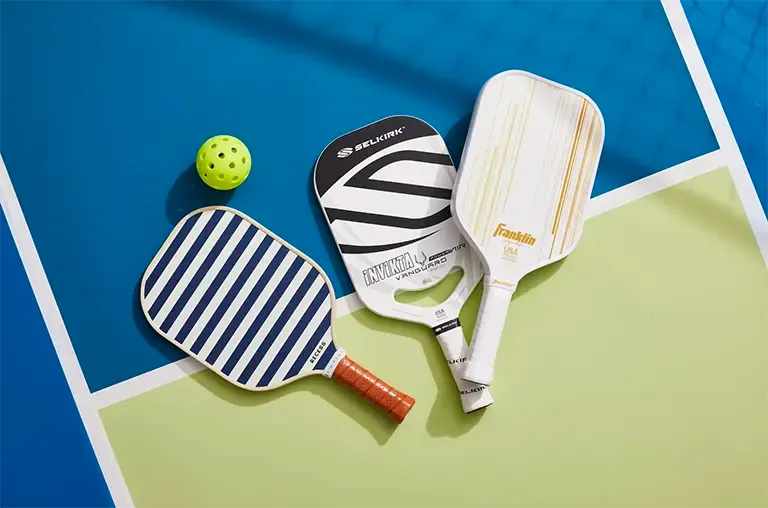
Benefits of Lightweight Paddles
There are numerous advantages to using lightweight paddles. Enhanced ball control is one such perk; players can execute delicate shots like dinks and volleys with far greater ease. Moreover, less mass facilitates quicker reactions, allowing for faster adjustments during play. This is particularly valuable for players who frequently encounter volleys at the net.
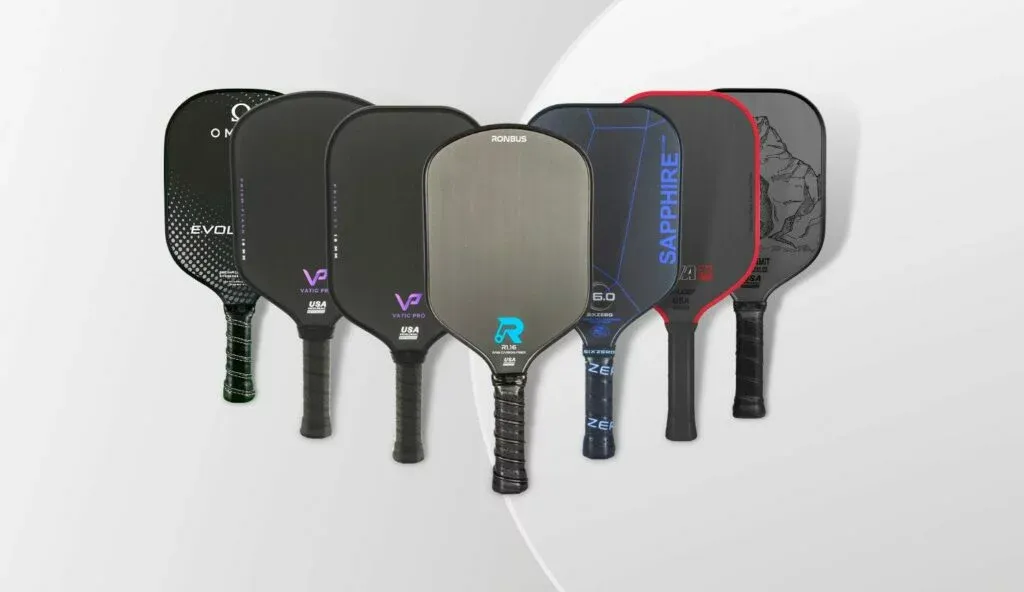
On the flip side, there are potential drawbacks. Many players find that the light design can lead to increased vibrations, which may impact power generation during swings. This could be a concern for advanced players who require a paddle that adds velocity to their shots. Nevertheless, the growing trend towards lightweight options is likely fueled by advancements in paddle technology, which often employs materials like graphite and carbon fiber to achieve a balance between durability and performance.
Rising Popularity
The increasing prevalence of lightweight paddles is attributable to various factors. The game’s dynamic nature necessitates rapid hand-speed and reflexive actions, making lighter paddles favorable for athletes who emphasize control over raw power. Furthermore, the lightweight design often appeals to younger players or those with previous injuries, offering lower fatigue levels and less strain on joints.
In summary, lightweight pickleball paddles are gaining traction in the sport due to their agility, ease of maneuverability, and specialized design features that cater to player comfort and performance.
What to Look for When Buying a Lightweight Pickleball Paddle
When selecting a lightweight pickleball paddle, potential buyers should consider several crucial factors that can significantly impact their performance and comfort while playing. Below, we outline key attributes to evaluate, ensuring you choose a paddle that not only meets your needs but elevates your game.
Weight
The pickleball paddle weight is often the most critical factor that players need to consider. While lightweight paddles generally range between 6.5 to 8.0 ounces, it's important to find one that feels comfortably manageable. A paddle that is too light may lack power and stability, while one that is too heavy can lead to fatigue and reduce overall agility.
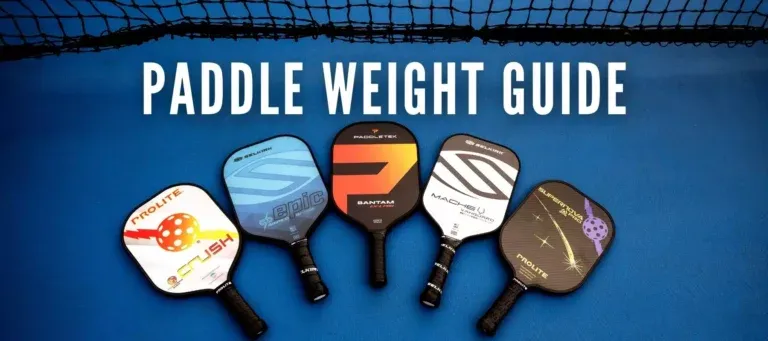
Suggested Weight Categories:
- Under 7.5 ounces: Ideal for quick reactions and enhanced control.
- 7.5 to 8.0 ounces: Provides a balance of power and maneuverability, suitable for players looking to hit hard without sacrificing speed.
Many players opt for paddles in the 7.0 to 7.5-ounce range, as they offer a sweet spot that delivers responsiveness and comfort. In more advanced play, the finesse needed for delicate shots is often better achieved with lighter options.
Grip and Handle
The grip and handle of a paddle can dramatically affect comfort and control on the court. Grip size typically ranges from 4 to 5 inches in circumference, and it should fit snugly in your hand to prevent slippage or cramping during play. A grip that is too small could lead to excessive gripping, which might cause fatigue, while one that is too large may hinder effective paddle maneuvering.

Grip Considerations:
- Grip Circumference: Ensure it fits comfortably to minimize strain during play.
- Handle Length: Adequate handle length is crucial for two-handed backhands.
Exploring different handle shapes and materials can also provide an added layer of comfort. A padded grip can enhance your control, especially during intense matches. Overall, selecting the appropriate grip is fundamental in boosting your performance while minimizing the risk of injuries.
Surface Material and Texture
The choice of surface material and texture will affect shot precision and overall gameplay experience. Common options for the paddle face include graphite, carbon fiber, fiberglass, and occasionally wood.
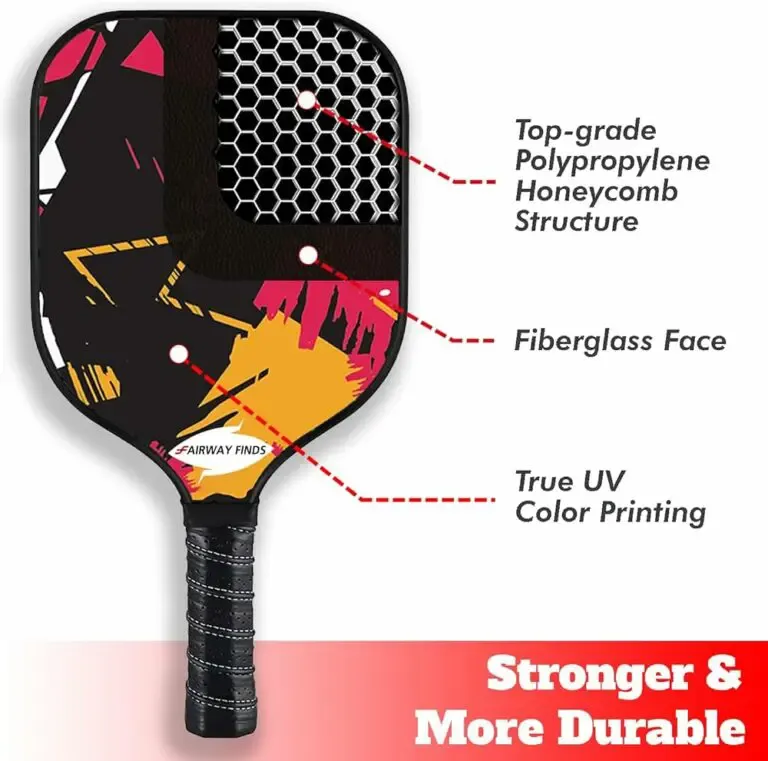
Material Comparison:
- Graphite: Lightweight yet highly stiff, providing excellent touch and control.
- Carbon Fiber: Known for its durability while maintaining lightweight properties, this material offers superb energy absorption.
- Fiberglass: Often favors power but can be heavier, making it less popular among players seeking lightweight options.
The surface texture is also important; paddles with a textured or rough surface can significantly enhance spin and control. This can allow players to create more dynamic shots, making their playstyle more unpredictable and effective.
Core Material and Thickness
The core of a lightweight pickleball paddle can dramatically impact its feel and performance during play. Most paddles feature one of three primary core materials polymer, Nomex, or aluminum each offering distinct advantages.
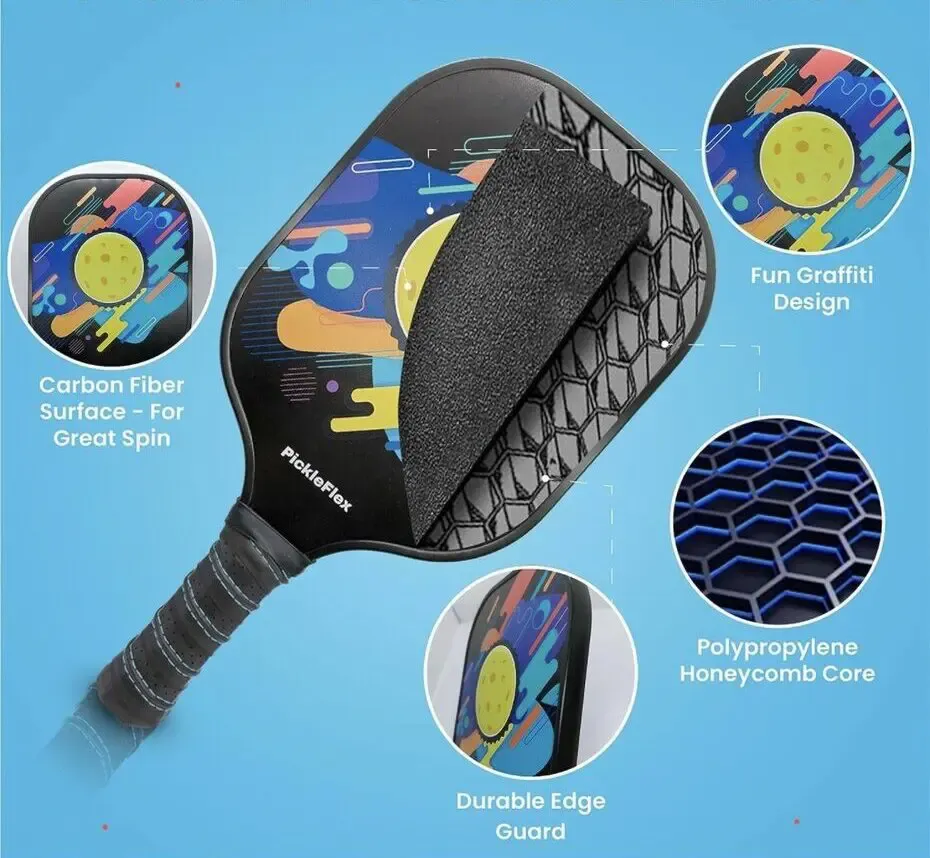
Core Material Breakdown:
- Polymer: Suitable for players seeking balance among power, control, and durability.
- Nomex: Provides a powerful feel but can be less forgiving, requiring more precise shots to achieve optimal performance.
- Aluminum: Rarely used in modern lightweight designs but can offer excellent toughness.
In addition to the core material, core thickness is an essential consideration. Thicker cores often contribute to a more stable feel, while thinner cores can enhance paddle sensitivity and control. Players should strive to find a paddle that marries the ideal core thickness with their desired playing style to achieve peak performance.
Paddle Shape and Sweet Spot Size
The shape of a pickleball paddle can significantly influence your overall game. There are several paddle shapes to consider:
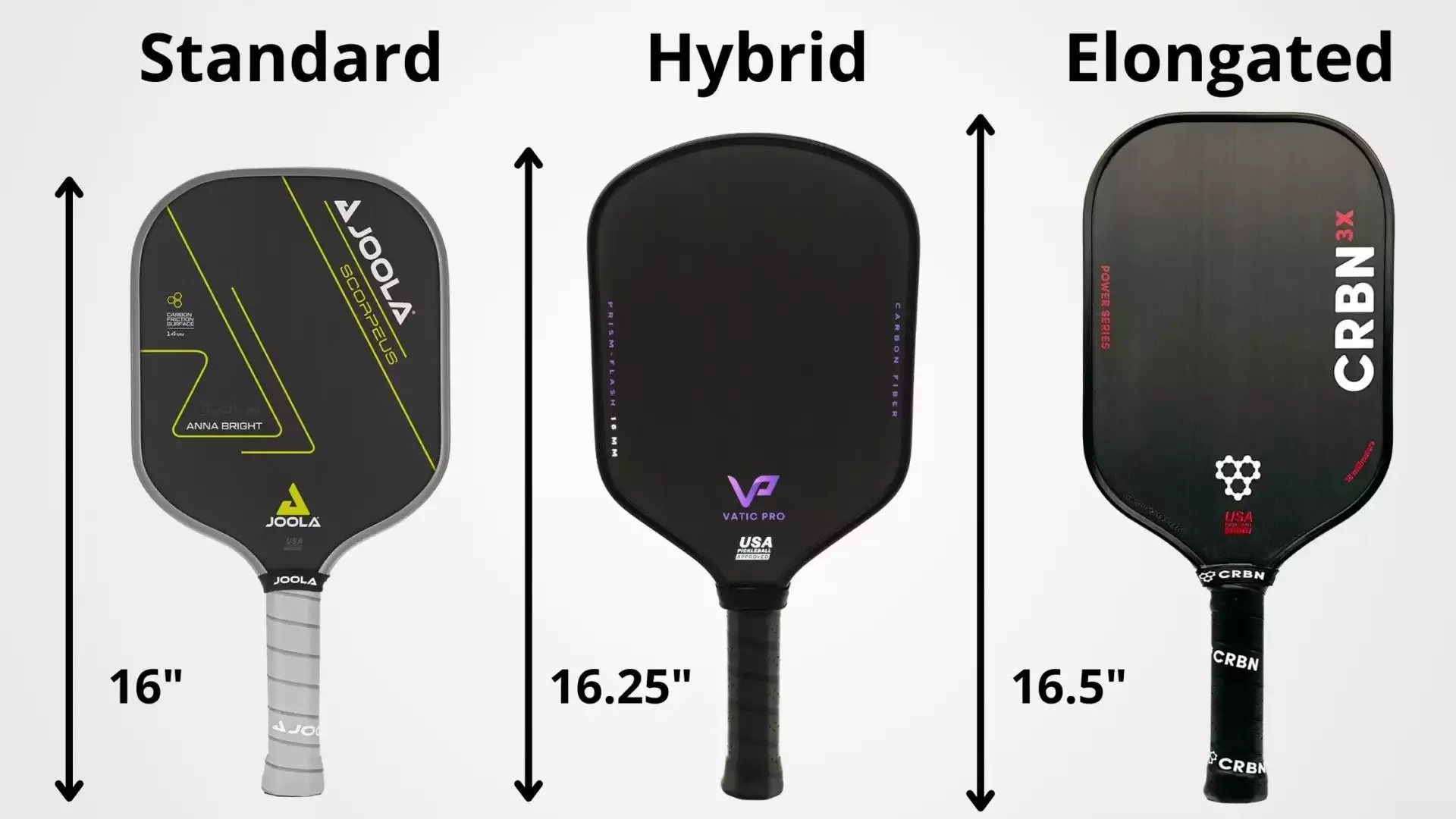
- Standard Shape: Offers a balanced design, providing a reasonable sweet spot for reliable hits.
- Wide Body: Features a larger sweet spot, which can enhance playability by reducing the risk of mishits.
- Elongated Shape: While granting better reach, it usually has a smaller sweet spot that may not suit all players.
Sweet Spot Importance
A larger sweet spot benefits players by allowing more forgiving shots regardless of ball contact. For beginners in particular, this can make a significant difference in their overall experience. Players may find that paddles designed with specific sweet spots tailored to their playing style can yield consistent results over countless matches.
Price and Budget
Pickleball paddle prices can vary widely, often depending on brand reputation, technology, and materials used. A typical pricing breakdown is as follows:
- Entry Level: $30 - $75 for beginners seeking affordable options.
- Mid-Range: $75 - $150 for players looking for enhanced performance or specialized features.
- High-End: $150 - $250 for advanced players investing in superior technology and build quality.
Players should determine their budget and weigh it against their skill level and intended use. While spending more may provide excellent benefits, beginners should it's advisable to start with a less costly paddle before transitioning to higher-end models. Understanding the balance between price and quality will enable players to make a more informed decision.
Top 9 Best Lightweight Pickleball Paddles in 2025
As we've discussed the essential features to consider when buying a lightweight paddle, it’s time to delve into our curated list of the best lightweight pickleball paddles anticipated for 2025. Our selection accounts for various player types, budgets, and performance needs, providing options that enhance both enjoyment and performance on the court.
Editor’s Choice: Selkirk Amped Control Epic Pickleball Paddle
The Selkirk Amped Control Epic pickleball paddle is our top pick for 2025, encapsulating everything a player could wish for in a lightweight option. Weighing approximately 7.6 ounces, this paddle is engineered for players who demand agility without sacrificing performance.
- Materials: The paddle boasts a polymer honeycomb core for a lightweight feel paired with a fiberglass face that enhances ball control and touch.
- Features: One of its standout characteristics is its larger sweet spot, allowing for more comfortable and forgiving shots, even during heated matches. Balanced and comfortable, it also features a well-designed grip that minimizes fatigue during longer play sessions.
In terms of pricing, the Selkirk Amped Control Epic is positioned in the mid-to-high range, typically between $170 to $220. Given its advanced technology and performance capabilities, it represents a valuable investment for serious players looking to elevate their game.
Best Overall: Engage Pursuit Pro EX
The Engage Pursuit Pro EX is often heralded as the best overall lightweight pickleball paddle for 2025, weighing around 7.5 ounces.
- Design: Its traditional 16-inch length and 8-inch width provide a larger sweet spot, making it forgiving during gameplay while maintaining excellent power and control.
- Materials: The paddle features a Toray T700 raw carbon fiber face, renowned for promoting spin potential, enabling players to execute precise shots and powerful serves with ease.
The 5-inch handle is wrapped in high-tack, perforated grip, ensuring comfort and effective grip during extended play. Its 13mm thick polymer honeycomb core contributes to its powerful feel and vibration damping, making it versatile enough for various skill levels.
Best for Spin: ProKennex Pro Flight
If generating spin is your primary focus, the ProKennex Pro Flight is the best choice for lightweight paddles in 2025. Weighing around 7.4 ounces, this paddle excels in spin production without requiring significant swing power.
- Unique Design: Constructed with a specialized carbon design that enhances its spinning capabilities, it enables players to maintain speed while improving touch and control.
- Health Technology: Notably, it features arm-saving technology that minimizes vibrations, providing a comfortable experience for players at every level.
Overall, this paddle is ideal for those who wish to introduce more variability and unpredictability into their shots, making it a solid investment for aspiring players.
Best for Control: Paddletek Bantam TS-5
Renowned for its exceptional control, the Paddletek Bantam TS-5 weighs between 7.0 and 7.5 ounces, allowing swift, precise movements without sacrificing power.
- Core Technology: Its Bantam PolyCore interior provides outstanding responsiveness and accuracy, contributing to its 8/10 control rating.
- Player-Endorsed: This paddle finds favor with both seasoned and beginner players alike, having been embraced by competitive player Anna Leigh Waters, the world’s top-ranked female player.
The combination of a fiberglass face and generous sweet spot makes it a top choice for those dedicated to finesse and strategic plays.
Largest Sweet Spot: Onix Stryker 4
Known for its impressive hitting surface, the Onix Stryker 4 offers one of the largest sweet spots available, ideal for beginners who may struggle with off-center hits.
- Construction: Its wide-body design maximizes performance across a broader area, providing consistent and reliable contact with the ball.
- Performance: This paddle embraces user-friendliness, making it a particularly appealing option for those new to the sport, aiming to develop their skills confidently.
The sweet spot utility combined with its enduring build makes the Onix Stryker 4 a valuable addition to any aspiring pickleball player’s gear.
Best Budget: SLK Latitude 2.0
The SLK Latitude 2.0 has emerged as a standout choice in the budget category for 2025, primarily tailored for beginners and intermediate players.
- Materials: Constructed with a Fiberflex fiberglass face and X4 Polymer core, this paddle delivers responsiveness while maintaining quick maneuverability.
- Weight: Weighing between 7.5 to 8.0 ounces, it remains ideal for players working on their skills.
The EdgeSentry guard adds extra protection without significant weight increase, while the comfortable SLK Contour Grip minimizes hand fatigue during prolonged sessions. Overall, it is an excellent starter paddle priced affordably for new players.
Best for Beginners: Rally PX Graphite Pickleball Paddle
Choosing the right paddle for beginners is crucial, and the Rally PX Graphite shines in this department. Weighing approximately 7.7 to 8.0 ounces, it strikes the perfect balance between power and control.
- Build Quality: Featuring a textured graphite face and widebody design, it encourages spin and offers forgiveness on off-center shots.
- Player Comfort: Its cushioned handle enhances comfort, ensuring beginners can play longer without discomfort.
This paddle stands out for newcomers eager to improve their skills while developing consistent control.
Best Set: SLK NEO
The SLK NEO is recognized as one of the best paddle sets for newcomers in 2025. Priced around $40, it offers incredible value for those looking to start their pickleball journey.
- Included Items: The set usually includes a paddle, balls, and a bag, catering to beginners by providing essential equipment.
- Paddle Specs: The paddle weighs around 7.5 ounces, featuring a good blend of power and control to help players develop their techniques.
With its budget-friendly price tag and quality components, the SLK NEO makes entry into the world of pickleball easy and enjoyable.
Best Durable: Paddletek Phoenix Genesis
For those seeking durability in a lightweight package, the Paddletek Phoenix Genesis stands out in its category, priced around $170.
- Core Technology: Designed specifically to withstand extensive play, it utilizes advanced polymer core technology for enhanced responsiveness and grip.
- Aerodynamics: The aerodynamic build boosts handling and maneuverability, making it a solid option for both intermediate and advanced players.
Its combination of durability and performance makes the Phoenix Genesis an exceptional choice for aggressive players focused on long-term performance.
Benefits of Using a Lightweight Pickleball Paddle
Choosing a lightweight pickleball paddle comes with several significant advantages that can positively influence your overall gameplay and enjoyment on the court.
Enhanced Maneuverability and Speed
One of the primary benefits of lightweight paddles is their ability to enhance maneuverability and speed. Typically weighing around 7.0 to 7.8 ounces, these paddles allow players to react swiftly to incoming shots, making them critical for executing quick plays, especially at net exchanges. With greater agility, players can adjust paddle angles more effectively, resulting in improved precision and tighter shot placements.
Key Highlights:
- Quick Reactions: Facilitates faster swings and better responses.
- Advantageous for Net Play: Essential for executing fast volleys and dinks.
The lightweight design can serve as a competitive edge, allowing players to maintain a high level of play without discomfort or fatigue, ultimately leading to stronger performance during matches.
Reduced Fatigue and Strain
Fatigue and arm strain are common concerns among pickleball players, especially during extended play sessions. Lightweight paddles provide a viable solution to this issue, promoting longer games without discomfort.
Advantages:
- Lower Joint Stress: The reduced weight translates to less strain on the wrist, elbow, and shoulder, allowing for prolonged game activity.
- Longer Play Sessions: Players can enjoy extended gameplay without being hindered by fatigue, providing an enjoyable experience during casual matches or competitive tournaments.
In essence, less weight allows players to maintain their energy levels, encourage better play and performance.
Improved Control and Precision
The lightweight profile is not only easier to manage but also promotes greater control when executing shots. Players can achieve more sensitive adjustments while hitting the ball, which can be especially important for finesse plays that necessitate accuracy.
Characteristics:
- Enhanced Shot Precision: Ideal for executing thirty shot placements that require delicate strokes.
- Greater Control: Helps develop strategic plays where agility and finesse are pivotal.
Overall, the lightweight nature of these paddles facilitates executing more accurate shots, allowing players to hone their skills effectively.
Potential for Faster Reactions
A paddle's weight can significantly influence the player's reaction time during exchanges. With a lightweight design, players can maneuver their paddles more quickly, ensuring they can adequately respond to challenging shots.
Quick Reflex Advantages:
- Heightened Agility: Players can switch rapidly between offensive and defensive plays.
- Effective Execution of Complex Shots: Greater chances of success with volleys.
Notably, having a lightweight paddle can grant players an edge, enabling them to handle demanding play styles and situations without being compromised by weight.
Development of Spin and Touch
The spin and touch a player can impart on the ball are central to their strategy as they compete. Lightweight paddles, especially those with advanced surface textures, can facilitate superior spin capabilities.
Benefits of Spin Enhancement:
- Ability to Execute Dynamic Shots: Players can mix up their styles through spin, making their gameplay unpredictable.
- Increased Shot Variation: Encourages using different spin types like topspin or sidespin for challenging opponents.
The lightweight construction allows for adept handling of subtle shots and advanced techniques, leading to a more versatile gameplay experience.
Lightweight vs. Mid-Weight Paddles
Understanding the differences between lightweight vs mid-weight pickleball paddles is essential for players looking to upgrade or adjust their equipment based on their playing style and needs.
Lightweight Paddles
Lightweight paddles generally weigh under 7.5 ounces, prioritizing agility and speed for players. With these paddles, players can expect the following features:
- Emphasis on Speed: Rapid swings facilitate quick exchanges, particularly in net play.
- Ideal for Control: These paddles often suit players who focus on finesse rather than sheer power.
Suitability:
Lightweight paddles are highly recommended for new players, juniors, or those who prioritize lesser strain on their joints.
Mid-Weight Paddles
Typically weighing between 7.6 to 8.5 ounces, mid-weight paddles offer a balance between power and maneuverability.
- Power Balance: Effective for strong groundstrokes, making them popular among more experienced or aggressive players.
- Stability and Control: Often more stable during high-impact shots, allowing for better overall performance.
Suitability:
Mid-weight paddles are advantageous for intermediate to advanced players who prefer to blend power with precision during gameplay.
Choosing between lightweight and mid-weight depends on your unique play style, personal preferences, and even physical condition. Lightweight options suit speed-oriented players, while mid-weight paddles provide a blend of power and precision.
How to Choose the Right Lightweight Pickleball Paddle for You
Selecting the right lightweight pickleball paddle requires careful consideration of various factors that align with your skill level, playstyle, and personal preferences.
- Skill Level: Beginners may prefer paddles that offer a larger sweet spot for added forgiveness, while intermediate and advanced players may look for more specialized options that enhance their game.
- Playing Style: Determine whether you focus on control-oriented tactics or aggressive play. Lighter paddles suit finesse players better while mid-weight options may benefit those seeking power.
- Physical Limitations: Players with wrist or elbow concerns might choose lightweight options for reduced strain.
- Test Options: If possible, sample various paddles to assess comfort, weight, and responsiveness. Everybody's grip and play style differs, warranting personalized selections.
- Consult Professionals: Utilize online paddle-fitting quizzes or seek recommendations from pickleball experts to identify the best fit based on your game.
Through thorough evaluation, you can make an informed decision that enhances your experience on the court.
Care and Maintenance of Lightweight Pickleball Paddles
Proper maintenance of your lightweight pickleball paddle is crucial for maintaining performance and prolonging its lifespan. Routine care will ensure you reap the benefits of your paddle for years to come.
Regular Cleaning
Ensure that your paddle is cleaned after each use to prevent dirt, sweat, or oil buildup on the face. Use a soft cloth with mild soap and warm water, avoiding harsh chemicals that could damage materials.
Storage Practices
Proper storage plays an essential role in maintaining the paddle’s condition. Keep your paddle in a dry and cool place, away from direct sunlight. Storing it within a padded case can protect it from accidental impacts.
Avoiding Excessive Force
Refrain from hitting balls with excessive force that may compromise the paddle’s structural integrity. Gentle strokes paired with strategic gameplay will extend its life considerably.
Periodic Inspection
Check for signs of damage, such as cracks or loose edges. Addressing these issues early will prevent significant damage over time.
By practicing proper care and maintenance, you not only preserve the paddle’s performance but also maximize your investment in the long run.
Is a Lightweight Paddle Right for You?
Determining if a lightweight paddle suits your playing style and conditions hinges on several factors to consider while evaluating its fit.
Yes, If:
- You prioritize speed and quick reactions: Lightweight paddles excel in rapid exchanges and net play.
- You're prone to arm and wrist fatigue: A lighter design reduces strain on joints, allowing for longer sessions.
- You are a junior player: Youthful players often benefit from the agility offered by lightweight paddles.
Maybe Not If:
- You rely on the mass for power: Heavier paddles generally provide stability and power during aggressive swings.
- You require maximum stability: If your gameplay consists of blocking heavy drives, the reduced weight may compromise stability.
- Play primarily singles: Players focusing on powerful serves and drives might find heavier paddles offer a more suited experience.
Identifying personal needs and playstyle will guide your decision.
Frequently Asked Questions About Lightweight Paddles
As players explore lightweight paddles, certain questions arise regarding their performance, durability, and overall effectiveness. Here are some commonly asked questions aimed to clarify concerns for potential buyers.
Are lightweight paddles less durable?
Durability can vary; many lightweight paddles are crafted from similar high-quality materials as heavier counterparts, offering longevity. However, they may be perceived as less robust due to lower stability against powerful impacts. Careful selection based on materials and brands can ensure sustained durability despite the light design.
What is considered the "sweet spot" weight range for most intermediate pickleball players?
The ideal weight range for intermediate players typically falls between 7.3 to 8.0 ounces, combining power and control capabilities for effective gameplay. This range allows for versatility, catering to their evolving play style without sacrificing feedback or performance.
What are the main benefits of using a lightweight pickleball paddle?
Key benefits include enhanced hand speed for quicker reactions, improved maneuverability for better play on the court, and reduced fatigue and arm strain, ultimately contributing to a more enjoyable and effective playing experience.
How much power do you typically sacrifice when moving from a mid-weight to a lightweight paddle?
When switching from a mid-weight to a lightweight paddle, players may notice a noticeable sacrifice in power. Typically, a lighter paddle requires more input from the player to generate the same shot velocity, but it often amplifies control and finesse.
Conclusion
In conclusion, the evolution of pickleball has led to an increasing preference for lightweight paddles among players seeking enhanced agility, control, and reduced fatigue. With various options available in 2025, it's crucial to assess personal playing styles, physical conditions, and preferences to find the perfect paddle. By understanding what features matter most be it grip size, paddle weight, or materials players can find a paddle that aligns with their unique needs.
Whether you’re a beginner looking to develop your skills with a forgiving paddle or an advanced player searching for a control-oriented option, there are plenty of lightweight models to consider. Take your time exploring the various offerings, and make an informed choice to elevate your pickleball experience while enjoying the countless benefits that a lightweight paddle brings.




























